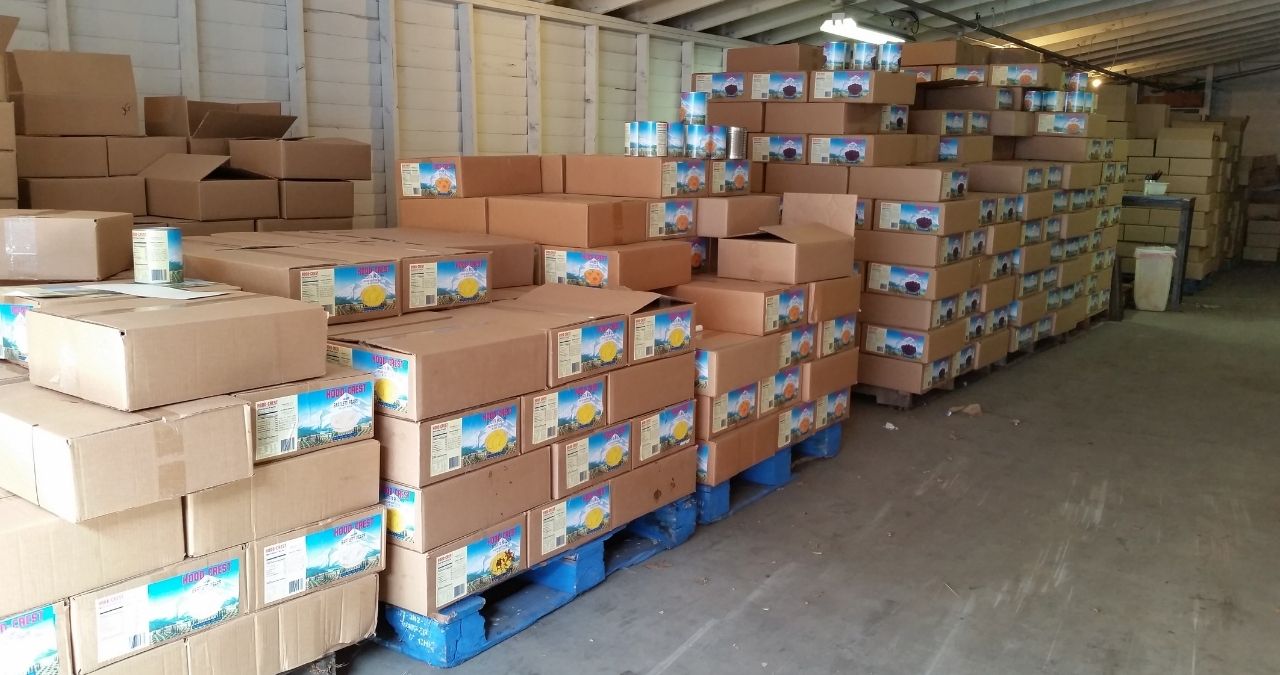
The label or term food grade is not a regulation, nor is there an organization behind it. The closest thing to ensuring that a warehouse is food-grade is sanitary certification from organizations that monitor sanitization. Such organizations include the 3-A Sanitary Standards or the European Hygienic Engineering and Design Group (EHEDG). Food-Grade is applied to food manufacturing equipment as well as food storage warehouse facilities.
What Makes a Warehouse Food-Grade?
Food-Grade Warehouses
Food warehouses are the vital link between the growing fields, the food processor or manufacturer, the retailer, and consumers. These types of storage facilities are specialized and are subject to government scrutiny. Furthermore, food warehouses must stand up to rigorous inspections and comply with strict federal, state, and local guidelines. In order to operate food warehouses must have in place and follow, food safety management systems, such as those overseen by ASI Food Safety and the Food & Drug Administration (FDA)
Food-Grade Warehousing Standards
Warehouses are either specialized or divided into specialized sections. Specializations include:
- Dry storage
- Refrigerated storage
- Frozen or cold storage
- Chilled storage
Each area has to focus on maintaining the correct level of sanitation and ensuring proper health standards. Requirements must be met in order to protect whatever types of food they store which can be raw, dry, or precooked. All of these food items are perishable and vulnerable to the elements and unsanitary practices, regardless of the quantity and quality of their packaging.
The basic criteria for food-grade storage are that a warehouse may not have:
- Leaking foundation edges, walls, or roofs.
- Standing water, weeds, rodent tracks or burrows, or trash around the warehouse’s perimeter.
- Broken windows or window frames.
- External damage in the form of broken pipes. Holes or cracks.
- Exterior building damage, such as cracks, holes, or open pipes.
- Cleaning products, chemicals, or pesticides stored in common areas and certainly not stored anywhere near food.
What’s more, there must be suitable measures to safeguard against the risk of cross-contamination with non-food products or other food products such as raw meat. This is because food packaging can absorb odors that can permeate through the packaging.
Food-Grade Warehousing Requirements
There are certain statutory requirements that a food-grade warehouse must meet. Food-grade warehouses must obtain a state food license and comply with all guidelines in the Food Safety Modernization Act (FSMA). In addition, a food-grade warehouse has to be registered with the Food and Drug Administration (FDA).
The warehouse must be open to annual inspections, and it will need to have a staff member who is Preventative Controls qualified. This person is responsible for managing the warehouse’s Food Safety Plan, which must include the following elements:
Standards for Facility Sanitation
Warehouse hygiene and staff personal hygiene. All employees must be familiar with the regulations governing both facility and personal hygiene.
Staff Training Information
Staff training should include modules on such topics as environmental pathogens, cross-contamination prevention, and employee sickness protocols.
Employee Training Records
All employees must attend training on quality awareness, personal hygiene, traceability, food handling, incident and crisis management, and food safety.
Pest Control Policy
Does the warehouse use pesticides? If so, what, where, and how often? Pests include birds, animals, rodents, and insects. Record keeping is vital.
Traceability Protocols
The facility must have a process for tracking the movement of product lots and make use of date codes to ensure that the inventory is rotated on a first-received, first-dispatched basis.
Food-Grade Equipment
Regulators also apply food-grade designations to materials and food manufacturing equipment. In order to qualify as food-grade, the materials must be non-toxic and safe to use in the production of food. When food comes into contact with the equipment, the materials that the equipment is made from must not contaminate the food.
Non-food-grade equipment contains materials such as silicone. Chemicals and acids from silicone can release, especially when heating the equipment. Furthermore, food-grade equipment must prohibit exposing grease or other lubricants to the food in the food manufacturing process.
It should not be possible for any metal elements can find their way into food. The equipment must also be totally cleanable. In addition, the equipment must undergo proper installation and maintenance.
Nebraska Warehouse One-Stop-Shop | Technology Enabled 3PL Value-Added Services Warehouse | Freight Broker | Logistics
Nebraska Warehouse doesn’t just help to facilitate your shipments, but we are truly a one-stop-shop solutions provider. Our services include:
-
- Professional Storage Development and Management
- Quality controlled Environment
- Responsive, Personal Customer Service
- Reasonable Price
- Real Estate Development and Management
- LTL & FTL Shipping
- Refrigerated Trucking & Storage
- E-Technology Software
- Transportation Freight
- Dedicated Contract Warehousing
- 3PL Public Warehousing
- 3PL Specifications
